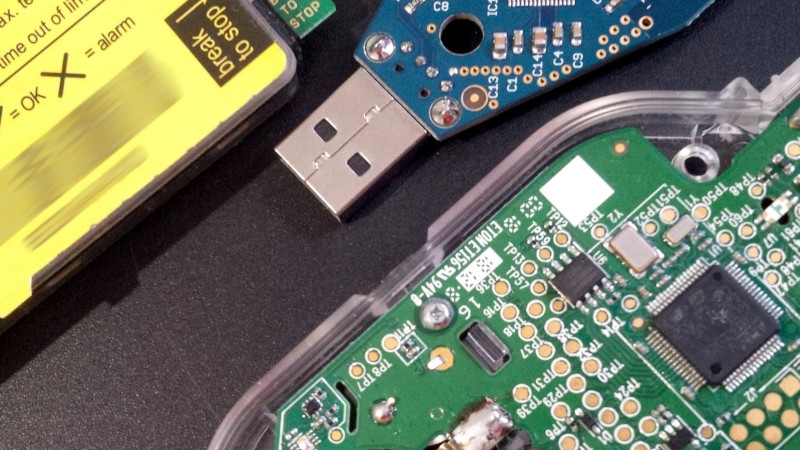The global supply chain is a masterpiece of containerized logistics that allows a container to leave a factory in China and arrive on a British forecourt after only a few weeks, but along with the efficiency it brings a traceability and monitoring problem. If you are shipping perishable items such as medicines or foodstuffs, how can you be sure that they’ve remained refrigerated the whole journey through?
The answer comes in digital temperature loggers, and since these are throwaway devices [arduinocelentano] decided to look inside and see if they could be reused. The answer is positive, in that many models have the potential to be useful dev boards for very little money.
These devices usually take the form of a bulky USB dongle with an LCD display and a few buttons. Inside they invariably have a low-power ARM microcontroller and a battery as well as the temperature sensor and some flash memory to store the readings. The data is read by the customer through the USB port, and they’re single use with manufacturers paying only lip service to recycling, because the data must by necessity be impossible to erase or alter. Happily for all that, many of them appear to be well-designed internally, with the relevant debug and programming ports exposed and the ability to access the microcontroller. We look forward to seeing what comes of these boards, because while the worst of the chip shortage my now be receding it’s always good to find a new source.

















I was handed a similar one recently, but this one intended for long-haul high-value frozen food trucking. It included a GPS receiver, and was powered by four non-replaceable disposable Energizer 1.6V lithium AA cells. Said to cost $300 for its single use. I was asked to see if it was worth scavenging for re-use. Sure, it had test points for programming and communication, but I saw an $8 GPS receiver and patch antenna, a $2 microcontroller, and various jellybean temperature sensor and IR communication bits, a few status LEDs and a piezo beeper. The $10 worth of AA cells were the most tempting, but they were likely dead anyway.
I said “Thanks, but not worth the time,” and handed it back. It went to e-waste about ten seconds later.
$30 of parts including a case and blinkenlights, and you turn it down?
I think you are reading the wrong blog. Turn in you hacker card on the way out… ;^)
The blinkenlights and the GPS are going to be great. If you can reprogram it and swap in a replaceable battery you have a GPS unit without the map
“handed it back”
But! But! — IT HAD FLASHY LIGHTS!!! lol
Such a waste. I get it that they don’t want an option to reset them to avoid manipulation, but couldn’t they start a timer once it’s alarm is enabled and reset them after a fixed period of time that’s above the average delivery window? That combined with a rechargable battery and one unit should last years.